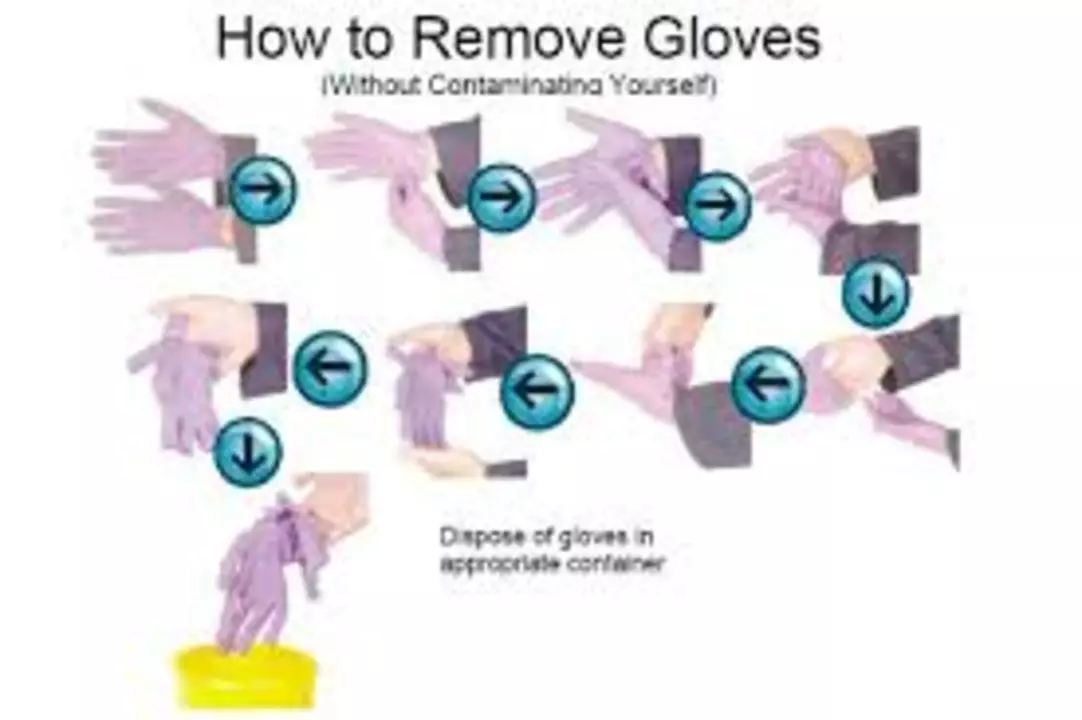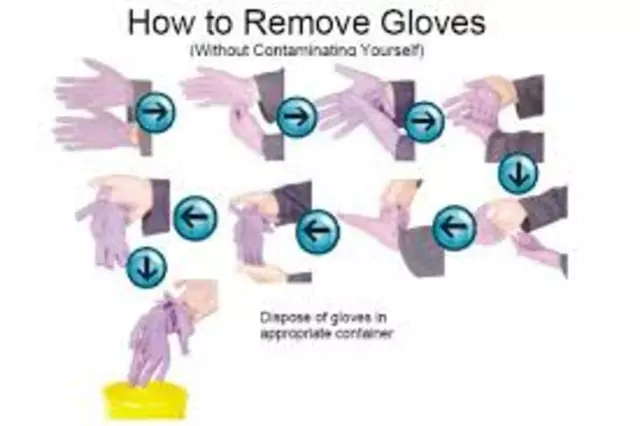Understanding Latanoprost Eyedrops
Latanoprost eyedrops are a type of medication used to treat high eye pressure and open-angle glaucoma. They help to lower eye pressure by increasing the amount of fluid that drains from the eye. Although these eyedrops are highly effective, there may be instances where you need to dispose of unused drops. This article will provide guidance on how to safely dispose of unused Latanoprost eyedrops and ensure you are doing so in an environmentally friendly manner.
Reading the Expiration Date
Before you dispose of your unused Latanoprost eyedrops, it is essential to check the expiration date on the bottle. Using expired eyedrops can lead to reduced effectiveness and potential harm to your eyes. If the eyedrops have not yet expired, consider storing them in a cool, dry place to use in the future. However, if the eyedrops are expired or close to their expiration date, it is time to dispose of them safely.
Consulting Your Pharmacist
Your local pharmacist is a valuable resource when it comes to disposing of unused medications, including Latanoprost eyedrops. They can provide you with information on the proper disposal methods and may even have a medication disposal program in place. By consulting your pharmacist, you are ensuring that you are taking the necessary steps to safely dispose of your unused eyedrops and prevent any potential harm to the environment.
Using Medication Take-Back Programs
One of the safest ways to dispose of unused Latanoprost eyedrops is through a medication take-back program. Many pharmacies, hospitals, and community centers offer these programs as a way to collect and safely dispose of unused medications. These programs ensure that the medications are disposed of in an environmentally responsible manner and do not end up in our water supply. Check with your local pharmacy or community center to see if they offer a take-back program.
Disposing of Eyedrops at Home
If a medication take-back program is not available in your area, you can safely dispose of unused Latanoprost eyedrops at home. Start by removing the label from the eyedrop bottle, which contains your personal information. Next, empty the contents of the bottle into a sealable plastic bag. Add an unpalatable substance, such as used coffee grounds or cat litter, to the bag. This will deter any children or pets from accidentally ingesting the eyedrops. Seal the bag and place it in your household trash.
Recycling the Eyedrop Bottle
Once you have safely disposed of the unused Latanoprost eyedrops, it is important to recycle the eyedrop bottle. Most eyedrop bottles are made of plastic, which can be recycled in your curbside recycling bin. Be sure to rinse the bottle thoroughly with water before placing it in the recycling bin to ensure that no residual medication remains.
Avoiding Flushing Eyedrops Down the Drain
It is important to never flush unused Latanoprost eyedrops down the toilet or pour them down a sink or drain. This can lead to contamination of our water supply and harm aquatic life. By following the safe disposal methods outlined in this article, you can help protect the environment and ensure that your unused eyedrops are disposed of properly.
Informing Family and Friends
Now that you know how to safely dispose of unused Latanoprost eyedrops, it is important to share this information with your friends and family. Many people are unaware of the proper methods for disposing of medications, which can lead to harmful consequences for the environment and public health. By spreading the word, you can help others take responsible action when disposing of their unused medications.
Proper Storage of Latanoprost Eyedrops
To ensure the effectiveness and safety of your Latanoprost eyedrops, it is important to store them properly. Keep the eyedrops in their original container, tightly closed, and store them at room temperature away from direct light and heat. Avoid storing the eyedrops in the bathroom, as humidity can affect their potency. By storing your eyedrops correctly, you can help extend their shelf life and reduce the need for disposal.
Regularly Reviewing Your Medications
One way to minimize the need to dispose of unused medications, including Latanoprost eyedrops, is by regularly reviewing your medications. Take the time to go through your medicine cabinet and check for any expired or unused medications. By doing so, you can ensure that you are only using safe and effective medications and reduce the amount of waste you generate. Remember, when in doubt, consult your pharmacist or healthcare provider for guidance on medication disposal.



Comments
When you're cleaning out your medicine cabinet, it's easy to overlook eyedrop bottles. Take a moment to check the expiration dates and set aside any that are past their prime. Remember, proper disposal not only protects your eyes but also the environment. If you're unsure, a quick call to your pharmacist can save you a lot of hassle. Keep the bottles sealed until you can drop them off at a take‑back event.
I concur with the previous guidance and would like to emphasize that the United States Pharmacopeia recommends adhering to local hazardous waste regulations when discarding ophthalmic solutions. It is advisable to consult the material safety data sheet accompanying the product and observe any state‑specific requirements for pharmaceutical disposal.
Oh, the drama of a forgotten bottle of Latanoprost gathering dust in the back of the bathroom! It’s like a silent thief waiting to strike, but fear not, dear readers, because we can turn this tragedy into a triumph of responsible stewardship. By following the steps outlined, you become a guardian of both your vision and Mother Earth. Imagine the satisfaction of knowing that no stray droplet will ever infiltrate a river or haunt a fish!
Sure, just toss the bottle in the trash and hope the EPA doesn't notice-because that's how we solve every problem, right? I guess if you enjoy polluting, you’ve got a hobby.
yeah take the label off dont forget to put the drop in a ziplock bag add coffee grounds or cat litter seal it and toss it in the trash thats it
Regularly reviewing the contents of your medicine cabinet is a habit that pays off in more ways than one. By systematically scanning each bottle, you can quickly identify which Latanoprost eyedrops are approaching their expiration date and which have already lapsed. Expired ophthalmic solutions not only lose potency but may also develop microbial contamination that could be harmful if inadvertently administered. Moreover, discarding these products without proper precautions contributes to pharmaceutical pollution, a growing concern for water treatment facilities worldwide. Pharmacists are trained to provide specific instructions on how to neutralize and dispose of such medications safely. Many local health departments have partnered with pharmacies to host medication take‑back events, which are the gold standard for safe disposal. If a take‑back program is unavailable in your vicinity, the FDA recommends mixing the medication with an unappealing substance such as used coffee grounds, cat litter, or even dirt before sealing it in a sturdy plastic bag. This step not only deters accidental ingestion by children or pets but also reduces the likelihood of the drug entering the municipal waste stream in an active form. After sealing the bag, you should place it in your regular household trash, ensuring that the bag is not punctured or torn. The empty bottle, once rinsed thoroughly, can be recycled with other plastics, provided your local recycling program accepts the specific resin type. Before recycling, double‑check that no residual medication remains; a quick rinse under running water usually suffices. Never, under any circumstance, flush ophthalmic medicines down the toilet or pour them down a sink, as wastewater treatment plants are not equipped to remove these compounds completely. The cumulative effect of many households flushing drugs can lead to detectable levels of pharmaceuticals in rivers and lakes, affecting aquatic life. By adopting these disposal practices, you contribute to a larger environmental protection effort that safeguards both human health and ecosystems. In addition, sharing this knowledge with family members ensures that the community as a whole becomes more conscious about medication waste. Ultimately, responsible disposal of Latanoprost eyedrops is a simple yet powerful act that aligns personal health management with environmental stewardship.
🌍💧 Taking responsibility for our meds is a tiny act with big ripple effects! By using take‑back programs or the coffee‑grounds trick, we keep our waterways clean and our eyes safe. Remember, every bottle counts. 🙏
Just a quick note: the previous comment could benefit from a comma after "Take responsibility for our meds" and a period before "By using take‑back programs". Minor tweaks improve readability.
Consider the metaphor of discarded medication as the leftovers of a promise we made to ourselves-each bottle a silent vow to preserve sight. When we neglect its proper end, we betray that promise, allowing the promise to dissolve into the unseen currents of our world.
It is incumbent upon each citizen to honor such promises by adhering to the highest standards of pharmaceutical stewardship. The moral imperative demands that we do not allow our neglect to become a source of environmental harm.
Honestly, the whole thing’s pretty straightforward-just don’t dump the stuff down the sink. Do the take‑back thing or the coffee‑grounds hack, and you’re golden.
Your take‑back advice is solid.
Great point! Empowering everyone with clear, step‑by‑step instructions turns a potentially confusing process into a confidence‑building routine. When you know exactly how to neutralize a bottle-label off, mix with coffee grounds, seal, and drop it in the trash-you feel in control of both your health and the planet’s wellbeing. Sharing these tips with friends and family creates a ripple effect, transforming a single act of responsibility into a community habit. Keep spreading the word, and let’s make safe disposal the norm rather than the exception!
Thanks for the boost! Simple steps are the best way to get everyone on board.
The article covers the main points well, offering practical disposal methods without overcomplicating things.
Indeed, the clarity of this guide is commendable, and its emphasis on environmental stewardship is both timely and essential. By laying out the steps-checking expiration dates, consulting pharmacists, utilizing take‑back programs, and safe home disposal-the authors provide a comprehensive roadmap. This kind of thorough, empathetic instruction empowers patients to act responsibly, bridging the gap between personal health and collective ecological health. Moreover, the reminder not to flush medications safeguards aquatic ecosystems, an often‑overlooked consequence of everyday actions. It is refreshing to see such a balanced blend of medical precision and eco‑consciousness, and it sets a benchmark for future health‑related guidance.
Just a heads‑up: the phrase "empowering patients to act responsibly" could be tightened by removing the extra "to" after "empowering". Small edits enhance the flow.
Thanks for the tip! 😊 I’ll keep that in mind next time I’m clearing out my cabinet.
Wow, thanks for the enthusiasm-nothing says ‘I care’ like a smiley face after a grammar correction.